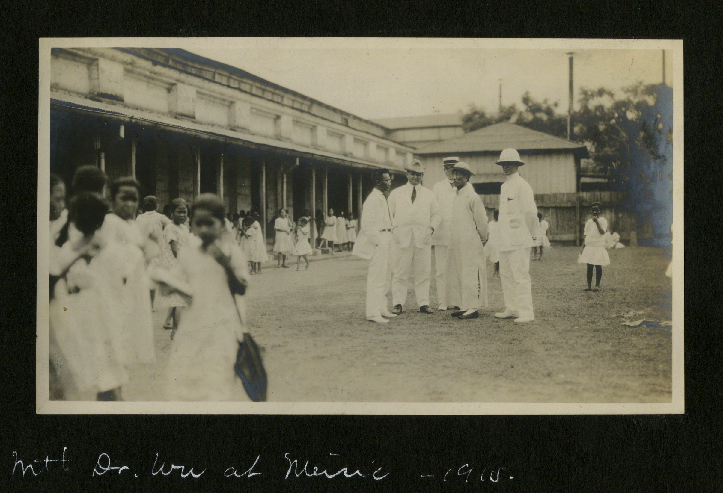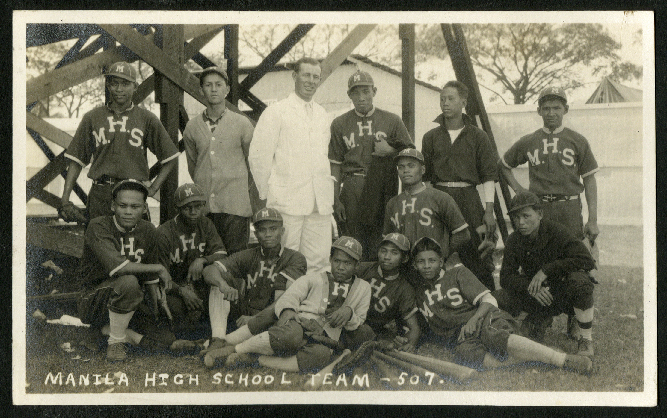II. American Education in the Philippines

"Met Dr. Wu at Metric - 1915." Black and white photograph. Album #2, Crone Mss. [Among the men in white suits, Crone is the man second from the left.]
In a paper Crone delivered before the general session of the National Education Association held in Oakland, California, August 1915, on the occasion of the Panama-Pacific International Exposition, he touted the benefits of American schools and instruction in the Philippines,
“There has been a great intellectual awakening; indeed it would be difficult to find any other country that has in this brief period of fifteen years progressed so far. ... The army opened schools before the smoke of battle had rolled away. A new government was established to promote the welfare of the Filipino people. ... Whatever may be the future of the Philippine Islands, we should congratulate ourselves as a people that this great opportunity for service was offered us, and that my countrymen and yours have been true to the highest American ideas and have built accordingly. ... We who have devoted our energies to the solution of the Philippine educational problems dream another dream: that of making the Philippines a great storehouse of Western learning and civilization, upon which the Orient may freely draw."
As director of education, the one responsible for "making the Philippines a great storehouse of Western learning and civilization," Crone was in charge of supervising instruction in the public schools of the country. He oversaw the building of schoolhouses and general infrastructure development for public education, organized the system of universal vocational and physical education, and directed the finances of the public school system. He bolstered a number of initiatives in the educational system, including system-wide English-only instruction. In the Fifteenth Annual Report of the Bureau of Education in Philippines, Crone writes, "Pupils taught in English made greater progress. ... [A]n adoption of a plan [to teach in regional dialects] would be a decided step backward for the Filipino people, a step which, it is believed, they will never be willing to take." He also made great efforts to increase participation and enthusiasm for the athletic departments in schools. Earlier directors had trouble getting Filipino students to participate in organized sports, but Crone's directorship turned things around. During Crone's time as director, schools began to support numerous track, basketball, and baseball teams (such as the one pictured here). Teams competed regionally and in larger tournaments in China and Japan. Crone also boosted the "great corn campaign"—an initiative to increase the growth and consumption of corn in the Philippines in order to cut costs of rice imports. Schools held corn demonstrations, parades, and contests in growing corn (like the one in which Emilio Aguinaldo, Jr. participated) to promote the consumption and production of corn. As the son of a Hoosier farmer, Crone perhaps enjoyed the backdrop of familiar corn stalks amidst the unfamiliar Philippine tropical flora.
Crone's initiatives point to the cultural transformation that the American colonizers considered to be the centerpiece of their imperialist project. Interestingly, even as Filipinos gradually held more and more positions in government and other organizations implanted in the Philippines by the Americans, the position of Secretary of Education was never held by a Filipino during the entirety of American colonial rule from 1902 to 1946. Such exclusion shows the powerful role education played in the United States' plan for benevolent assimilation. Photographs of school yards full of new pupils, newly constructed school houses, and the many athletic teams were meant to demonstrate the "progress" the Filipino made in assimilating to "Western learning and civilization."

